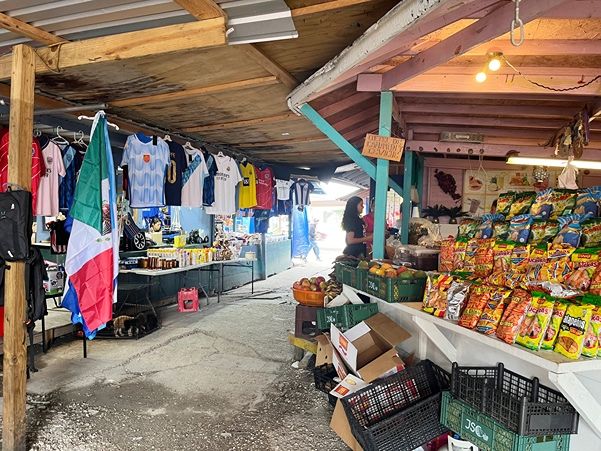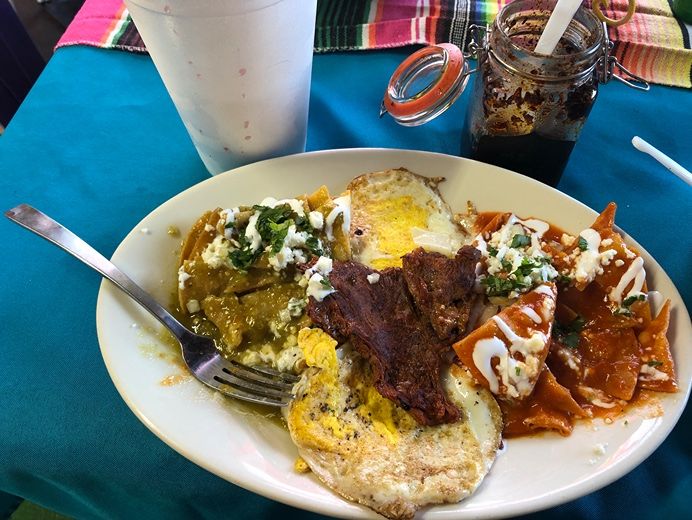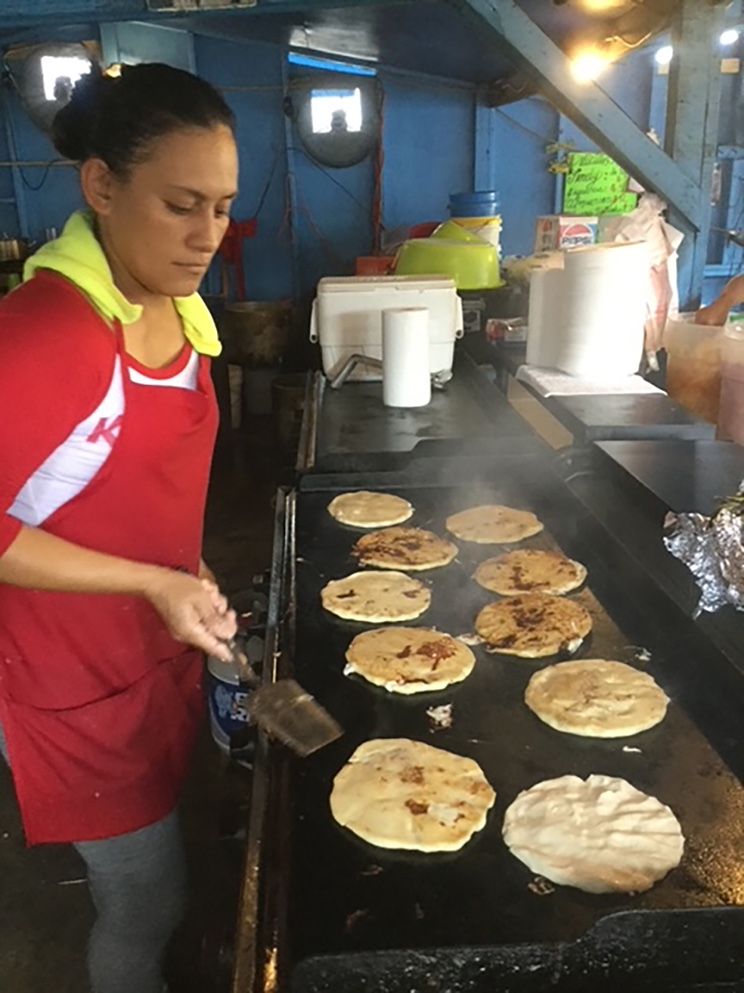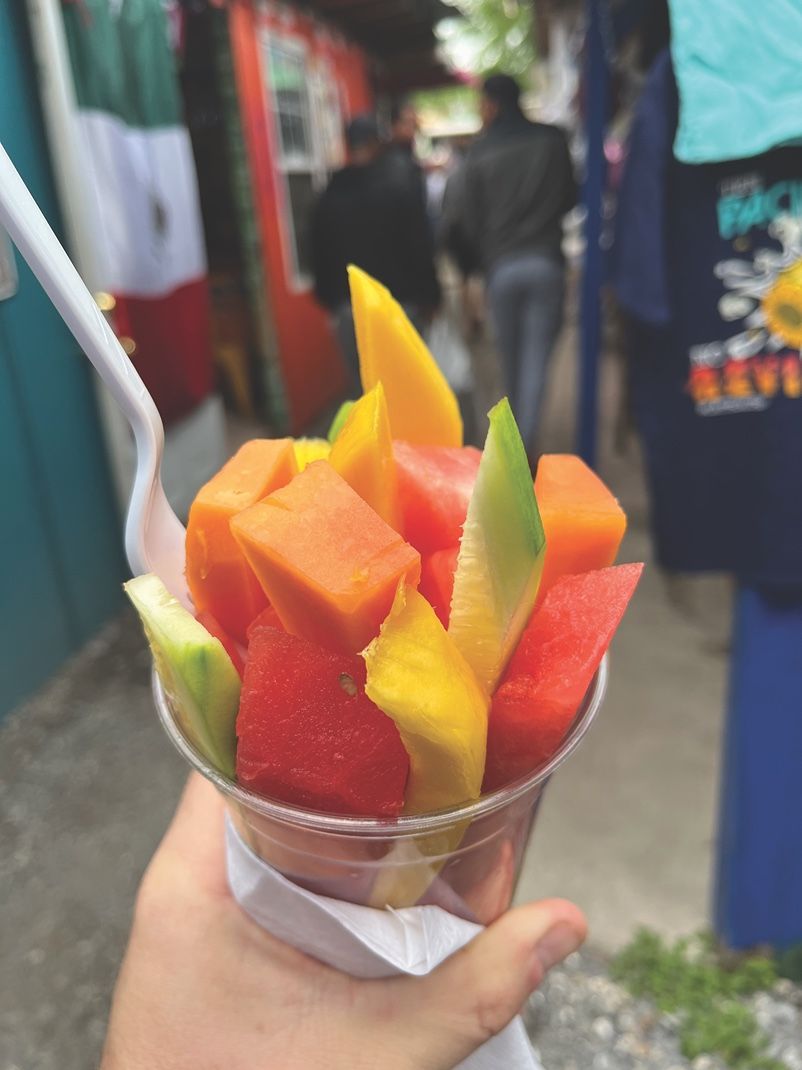Get a Taste of Latin America in Algiers
New Orleans has a long history of cultural confluences, making it the lively city we know and love today. From a detailed history of Vietnamese influence to unique Cajun folklore, New Orleans itself is a celebration of different cultures coming together. In Algiers, you can experience the vibrancy of Latin American culture in NOLA at La Pulga, a flea market like no other.
Dix Jazz Market Has All You Need
If you wake up one weekend morning in need of a haircut, used power tools, a pet parakeet, Guatemalan textiles, or simply the best Latin American food in the area, Westbank's Dix Jazz Market is waiting for you.
"It's a place for all cultures to come together," says New Orleans-native Angela Dix, owner of the Dix Jazz Market. Long-time locals know Dix Jazz Market as the "Algiers Flea Market," while its mostly Latin-American customers and vendors refer to it as la pulga—meaning "the flea."

This market lies in an otherwise unfrequented part of Algiers at 2105 Behrman Hwy, just below U.S. Highway 90 leading onto the Crescent City Connection bridge. Its meandering boardwalks and clusters of semi-permanent shacks have the disorienting charm of markets in other countries. "New Orleans is a gumbo pot. We welcome everyone," Dix says. "99% of vendors are from Latin America or Hispanic."
Vendors at La Pulga
Vaguely organized into sections that can shift slightly from week to week, the market consists of vendors selling an array of home goods, used clothing, tools, furniture, produce, and hot food.
But no matter what you are looking for, come hungry because the food is as authentic, fresh, and affordable as it gets. While many of the restaurants keep their own hours, the market is generally open early morning until around 5 p.m, Wednesdays through Sundays. While Wednesdays through Fridays include specific food vendors, Saturday and Sunday is open to all vendors, but Sundays seem to be the liveliest.
Market stalls are converted into charming mini-restaurants, each with their own personalities and specialties. You may have to navigate some puddles or a little mud to get to each spot, but the care that is put into the food, ambience, and service is evident. With vendors offering regional specialties from El Salvador, Guatemala, Honduras, Mexico, and Haiti, you will likely find something here that you are unfamiliar with, and therein lies the opportunity of la pulga.

Without the pricey overheads of brick and mortar restaurants and pressure to appeal to the masses, chefs offer authentic tastes of their cultures, catering to those that frequent the market. Hot pupusas, fresh sugar cane juice, comforting soups, tacos, snacks, and baleadas abound.
A Brief History of La Pulga
The Algiers Flea Market has been a West Bank staple for over 40 years, but in post-Katrina years, the market's vendors and clientele increasingly are from Central American countries, driven largely with the influx of Honduran migrant workers. After buying the market in 2007, Dix originally planned the space to highlight jazz music as an ode to her father who loved jazz, but, as time progressed, the Dix Jazz Market evolved into something completely different.
Today La Pulga is a mixture of Latin American flavors and delicacies unlike anywhere else in New Orleans, boasting of offering "some of the most authentic Latin American food in New Orleans."
La Catrina
When immersed in the winding alleys and bustling walkways of la pulga, nothing is particularly easy to find. But wander around long enough (or just ask someone), and you will come upon La Catrina, a charming Mexican restaurant serving up homestyle dishes prepared by the matriarch herself.
The restaurant is noteworthy for its ambiance alone. The tiny structure with about five tables and an open window to the kitchen is filled with colorful Mexican keepsakes. The eatery's atmosphere paired with aromas from the kitchen might have you forget you are in an isolated area of Algiers, instead being transported to a roadside restaurant in southern Mexico.

La Catrina's abundant menu offers items such as pozole and other soups, regional Mexican street food, and queso birria tacos. Homey Mexican breakfast items include chilaquiles as a highlight. Freshly fried tortilla chips are smothered in a warm bath of either red or green salsa and topped with an egg, protein, and queso fresco. As you eat chilaquiles, the crispy chips get slightly chewy as they bathe in the salsa, making for a base that is as texturally complex as it is yummy.
Delicias Yendy
Follow the smoke billowing from a large flat top grill from within a bustling dimly lit structure to Delicias Yendy. There is no set menu to be found, just several top-notch options of El Salvador's beloved snack—the pupusa. Pupusas are thick, cornmeal cakes stuffed with piping hot cheese and other ingredients accompanied with a spicy slaw and salsa.

At Yendy, the experts in the open kitchen are frenetically flipping pupusas until perfectly seared with brown crispy bits of cheese around the edges. A choice of bean, cheese, pork, or mixed pupusas come with access to enormous, self-service containers of pickled slaw, veggies, and salsa. The tangy veggies and spicy salsa are the perfect accompaniment to the rich, cheesy pupusa.
La Pulga: A Sweet Place to Eat and Shop
If you find yourself in need of something sweet and cool, fruit is in abundance. Fresh fruit cocktails, smoothies, snowball variations, and juices are sold by multiple vendors and provide an important reprieve from the heat.

"The way I see the market is a place for all cultures to come together, especially in a time like this, with the economy, people can make a couple extra dollars," Dix says, hoping to incorporate more New Orleans music and flair into the market. She is happy that "people feel comfortable here—many people tell me it feels like home."
La Pulga Brings Central American Culture to New Orleans
In many ways, la pulga feels like a world away from the iconic New Orleans scenes sitting just across the river. At the market, you can't find the creole cuisine or French Quarter fun that typically represent the Big Easy. But it also fits right into New Orleans' spirit of creativity, passion for comfort food, and the many contributions of diverse cultures that, throughout history, have made the city a colorful, interesting, and delicious place to be.

